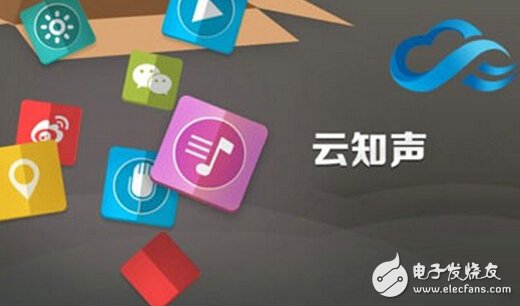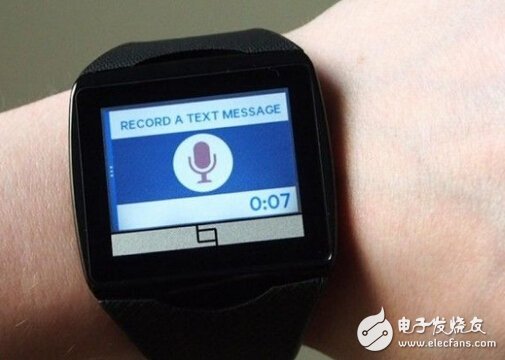With the continuous development of voice technology, speech recognition has been widely used in many fields. We have experienced the convenience of applications such as voice input, voice control, and voice dialing, but they often vomit their bottlenecks in recognition. Despite the fact that today's hot wearable device manufacturers are working hard on this technology, it is clear that speech recognition is considered to be the basic need in the future Internet of Things field, and will even be everywhere.

According to the "2013 China Intelligent Voice Industry Development White Paper" released by China Intelligent Voice Industry Alliance, intelligent voice has entered the stage of rapid application. Last year, the scale of China's intelligent voice industry was about 860 million yuan, driving the output value of related industries to 10 billion yuan. It is expected that by 2017, the scale of related industries will increase by 100 billion yuan, and the proportion of relevant global industry will increase from 5.6% last year. 17.1%.
The above data for the voice industry market is not particularly credible. Only the 2013 annual report released by Keda Xunfei shows that the total operating income is 1.25370.78 million yuan, a year-on-year increase of 59.92%, and the total profit is 3205.84 million yuan. I would like to ask how the content of the above white paper is convincing.
Enhance user experience, cloud platform still needs to be improved
With current technology, speech recognition can achieve very high accuracy under laboratory conditions, but in practical applications, environmental noise, dialect accent, topic professionalism and other issues are often encountered, which ultimately affects the user experience, and therefore, the technical stability and Maturity is the threshold for entrepreneurship in speech recognition. Liang Jiaen believes that in order to complete the speech recognition system, in addition to powerful algorithms, there must be a large amount of data. He admits that compared with the industry leader Keda Xunfei, Yunzhisheng has much less data. However, by establishing a public cloud platform, data can be accumulated continuously to optimize the system.

Yun Zhisheng, co-founder and CEO of Yunzhisheng, said that compared to the traditional 2B speech recognition company, Yunzhisheng’s genes are more biased towards the Internet, and the customization of private cloud services is facilitated through the free public cloud voice platform, which will be further commercialized in the future. Buried down.
Specifically, the public cloud platform provides large-vocal continuous voice online recognition, and developers can directly call public cloud services through APIs regardless of size. In fact, more than 80% of Yunzhisheng's customers are SMEs and individual developers, which is a difference and complement to Keda Xunfei, which is deeply rooted in large customer service. However, this does not affect the big companies' favor for Yunzhisheng. Liang Jiaen said frankly, including LeTV and Hammer RO M. In fact, the first thing to look for is the University of Science and Technology. The reason why Yunzhisheng can finally attract them, in addition to the technology to a certain level, the rapid execution is the biggest advantage. "In the case of cooperation with Sogou, it took only two weeks from the first contact to the release of the Sogou voice assistant, and generally it was a matter of months." These large companies have a large number of users. The son brought a lot of data to the public cloud platform.
With the public cloud as the foundation, Yunzhisheng further explores the path of private clouds. Liang Jiaen explained that the public cloud platform provides only basic voice technology services. In fact, the voice interaction is very relevant to the enterprise business. For those enterprises that have just needed voice, the public cloud is not enough to fully meet the demand. The recognition model is also optimized based on the company's unique application environment. For example, the cooperation between Yunzhisheng and LeTV is to deeply customize and integrate the voice assistant according to the TV field, so that the effect is more suitable for the actual use of the smart TV.
Smart watch will be bound to speech recognition
The smart watch screen is small, and it is not realistic to use an auxiliary tool such as an extra S-pen. Under the current conditions, only relying on voice input. Voice input seems to be a small basic application, but it requires very complicated technical capabilities. It has been involved in the field of artificial intelligence AI, and this technology has evolved for decades, and it seems that it has not been commercialized on a large scale. Development difficulty.

Gear has built-in Samsung's own S-Voice, and also cooperates with Baidu to pre-install Baidu voice assistant. It seems that the relationship between Baidu and Samsung is quite unusual. There is Baidu Cloud before, and there are voice assistants. Baidu, which is more important to Android than iOS, has a lot of support. However, there is still reason to believe that the technical strength of Baidu's voice assistant has reached the level expected by Samsung. Pre-installed its voice products can bring a better user experience to smart watches. Voice may be the only input method for smart watches. In this respect, it is impossible to be accurate, easy to use, and fast. It is difficult for users to pay for it, which will become a bottleneck for its development.
Other speech recognition tools, such as Sogou and Keda Xunfei, can also achieve similar recognition results. Viavoice is a learning type of speech recognition software. You need to adjust the recognition result in time to facilitate the next recognition of the machine. The accumulated identification data should be properly protected. If it is lost due to reinstalling the system, everything will be lost. Have to come back. From a commercial point of view, this does not make a good commercial experience, and today's speech recognition technology has clearly seen the dawn of experience.
Solve bottlenecks, speech recognition will be everywhere
Voice technology has been in development for a long time, most of which appeared in the customer service line of the enterprise. It was only used in the application a few years ago; now we can use it in applications, game consoles, home automation, robots, wearable devices, etc. See it in the field. “The technology will be ubiquitous,†said Tanya Kraljic, chief human-computer interaction and dialogue designer at Nuance CommunicaTIons. “As voice recognition technology evolves, people will understand that this is a natural way to interact with technology. ""
Of course, there are still some obstacles to overcome; but Kraljic believes that the next leap in speech recognition technology will be a way to inform the conversation, better understand the user's past, preferences, and personalities, and use sensors to get more The intelligent system of environmental information: "We have made very good progress in sensing technology and natural language understanding technology, and now we need to expand the limits of intelligent functions."
Kraljic pointed out that wearable devices will help promote the development of voice technology, especially since many of these devices are equipped with smaller screens or no screens, relying on voice-based human-computer interaction. Google Glass and Motorola's Hint hands-free headsets are two examples of voice as the primary input method: "The emergence of such devices has pushed the voice recognition experience a few more steps forward;" It's a bit strange, she thinks that one day the social atmosphere will change due to factors such as convenience and use value.
In the future, with the miniaturization of handheld devices, even wearable, various smart glasses, watches, etc. emerge in an endless stream, who can gain a leading edge in voice input, who can grasp a basic needs of users, who can also be in the Internet of Things In the world, it occupies an important entrance.
Bare aluminium conductors are electrical conductors made from pure aluminium. They are used in various electrical applications, including overhead power transmission and distribution lines.
Bare aluminium conductors have several advantages over other types of conductors. Firstly, aluminium is lighter than copper, which makes it easier to handle and install. This is particularly important for overhead power lines, where the weight of the conductor can have a significant impact on the cost and feasibility of the project.
Secondly, aluminium has a higher conductivity-to-weight ratio than copper. This means that for a given weight, aluminium conductors can carry more current than copper conductors. This makes them more efficient in terms of power transmission.
However, bare aluminium conductors also have some disadvantages. One major drawback is their lower mechanical strength compared to copper conductors. This makes them more susceptible to sagging and stretching under the weight of their own span, especially in hot weather conditions. To address this issue, aluminium conductors are often reinforced with steel strands to improve their mechanical strength.
Another disadvantage is that aluminium has a higher resistance than copper, which can result in higher power losses and voltage drops. To mitigate this, aluminium conductors are typically designed with larger cross-sectional areas compared to copper conductors to compensate for the higher resistance.
Overall, bare aluminium conductors are widely used in electrical power transmission and distribution systems due to their cost-effectiveness, lightweight, and high conductivity-to-weight ratio. However, careful design and installation considerations are necessary to ensure their mechanical strength and minimize power losses.
Aluminium Bare Stranded Conductors,Bare Aluminium Conductors,Overhead Transmission Line, Transmission line Bare Aluminium Conductors
Ruitian Cable CO.,LTD. , https://www.rtlinecable.com